Contributed by: Doug Webb
Updated on: January 5, 2023
Termites can be a homeowner's worst nightmare. They can cause significant structural damage to homes, which often goes unnoticed until costly repairs are needed. However, knowing the warning signs of a termite infestation can help you take the right steps toward preventing or mitigating the problem.
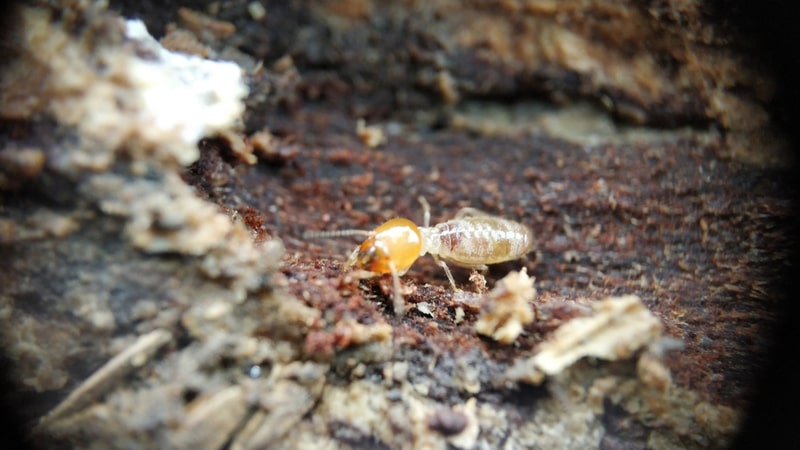
What are termites?
Termites are small insects that are usually less than a half-inch in length. These insects live in colonies with their own hierarchies. Termite colonies can vary in size, including just two termites -- a king and queen -- to a few hundred individuals. However, mature termite colonies can contain 60,000 to 1 million termites, depending on the type of termite colony.
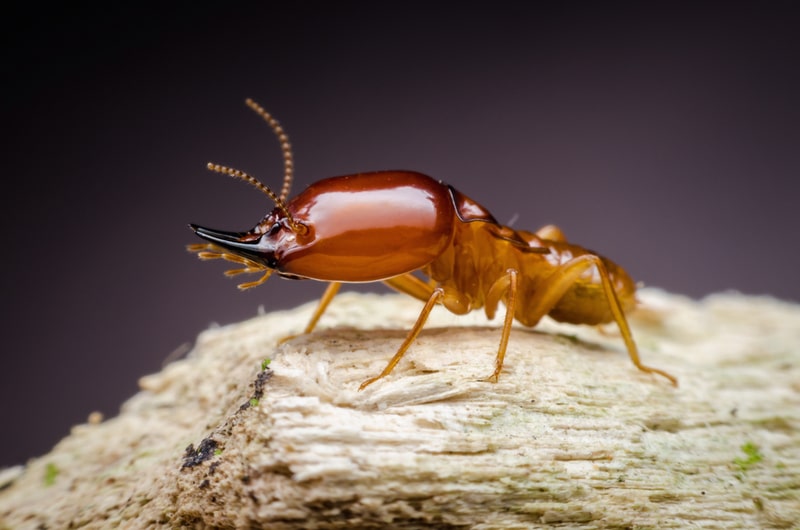
Termites are found all around the world and there are more than 2,000 species. Approximately 50 of these species can be found in the United States, with roughly 20 species of termites that are classified as structural pests that can cause damage to property. Termites feed on wood for the cellulose -- the main ingredient in paper, cardboard, and wood.
- Subterranean termite: This underground species of termite is among the most costly wood eating pests in the U.S.
- Formosan termite: Also subterranean, Formosan termites are responsible for roughly $1 billion in damages annually across the country.
- Drywood termite: Though not as destructive as subterranean and Formosan termites, these insects can still cause significant property damage.
Learn more about the different types of termites.
What do termites look like?
Though there are many species of termites, these insects do tend to have a few characteristics in common. Here's what to look for when identifying termites:
- White or brown bodies. Termites are often confused with ants, but they tend to be lighter in color than ants.
- Broad waist. Unlike ants, who have thin waists like wasps, termites are broad-waisted.
- Straight antennae. Ants have bent antennae, while termites' antennae are straight.
- Legs. Termites, like ants, have six legs. However, the broader width of a termite's waist, coloring, and antennae shape can help make it easier to distinguish between the two insects.
Learn more about what termites look like and how to identify termites.
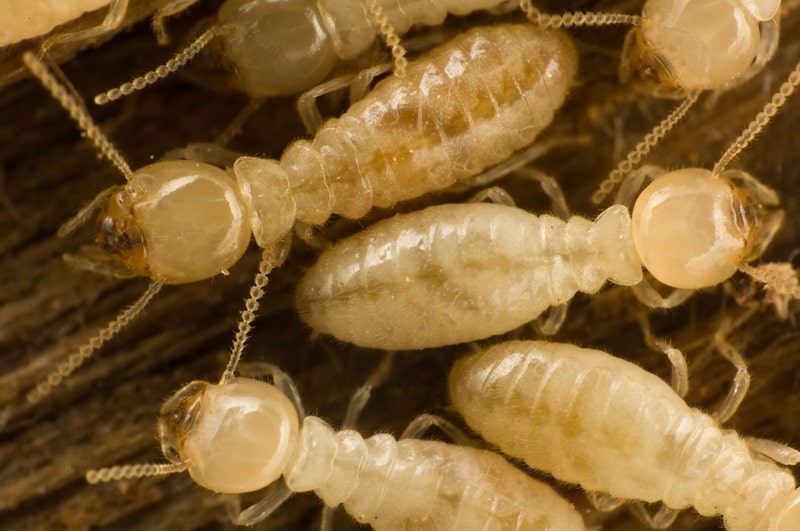
Should you worry about termites? Termite damage in the United States
Termite infestations impact more than 600,000 homes in the U.S. each year, causing around $5 billion in damage and treatment for homeowners.
Large termite colonies can eat up to a pound of wood in a month. And since these termites remain hidden while attacking a home, by the time signs of an infestation are noticed, you may have severe and expensive termite damage on your hands.
Homeowners should be on the look-out for signs of termites. There are also some preventative measures that you can take to try to prevent termites from coming into your home, including removal of potential food sources and correction of moisture problems in and around the home.
What does termite damage look like?
Termite damage is distinct, and you'll be able to recognize it by the "waffled" or layered appearance of damaged wood. Termites can damage wooden walls, furniture and trees on your property. They will hollow these structures out, tunneling through them, leaving holes and empty spaces behind. Keep an eye out for small holes and hollow wood. Similarly, looking for mud tubes in walls, fences and other wooden structures may be among the telltale signs of termite damage.
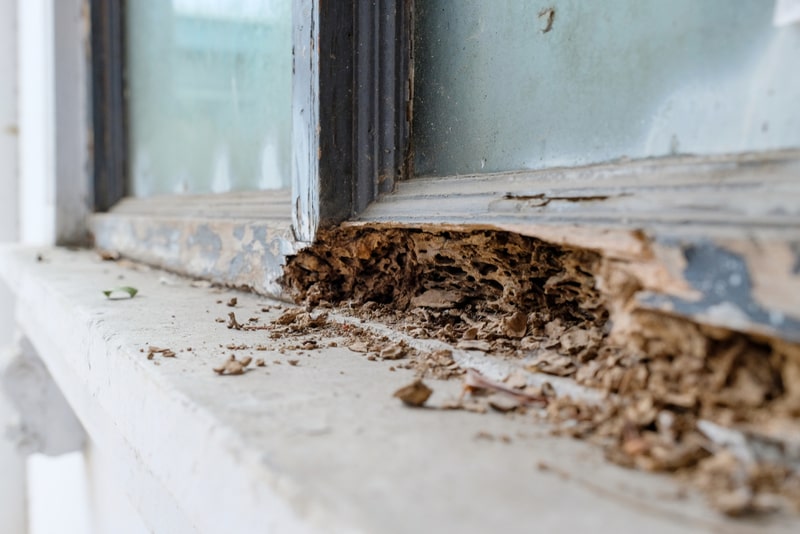
Learn more about Termite Damage:
Signs of termites in your home
Though it can be tricky to spot a termite infestation in your home, there are a few things you can look out for. Here are the most common signs of termites:
- Buckling or blistered floorboards
- Hollow-sounding walls
- Swarmers
- Dead termites or discarded wings
- Hard to open doors and windows
- Mud tubes
- Droppings
- Damaged drywall, bubbling under paint or wallpaper
- Moldy scents
- Dipping ceilings, buckling support beams, or other severe structural damage
- Overly squeaky floors and loosening tile
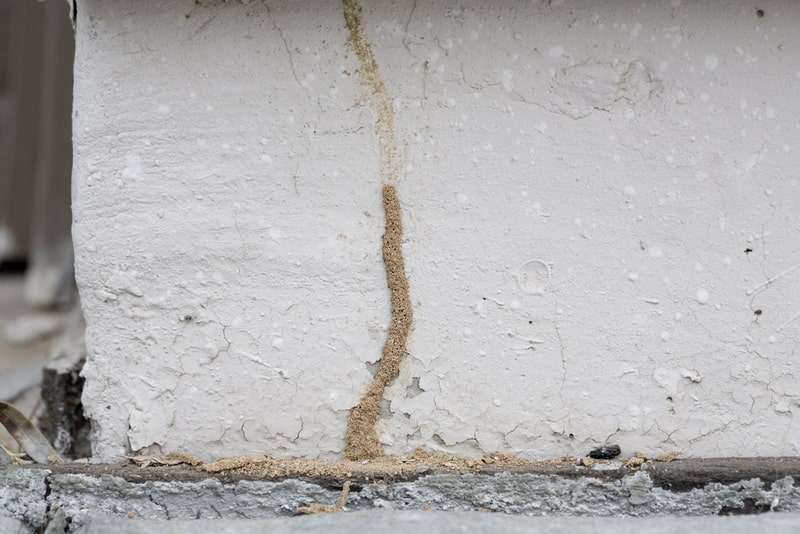
What causes termites and brings them into your home?
Keeping your home and yard clean and tidy won't deter termites. All species of termites are attracted to the wood in your home as it contains cellulose – their primary food source. Termites also need moisture to survive and prefer damp areas such as crawlspaces and the ground around your foundation.
While cellulose found in wooden structural beams and moist wood are the most common attractions for termites, there are a few other conditions that may invite termites, including:
- Poorly maintained air conditioning units. Leaky condensation pans or drainage lines can provide moisture which helps termites survive.
- Poor drainage. If your yard does not drain well after a storm, damp soil can create a more attractive breeding ground for thirsty subterranean termites. Make sure your yard is properly graded to point water away from your property and be sure your rain gutters are clear, redistributing rain water away.
- Leaking plumbing from your home. Any plumbing inside or outside your home (such as any spigots where you may attach a garden hose) should be checked for leaks. Leaky pipes can make the interior and exterior of your house more hospitable to termites.
Learn more about the causes of termite infestations.
What time of year are termites most active?
Termites can cause damage to your home year-round, but you may not notice them until the weather turns warm and swarming season begins. The majority of subterranean termite species swarm during the spring or summer months as the weather begins to warm. Conversely, drywood termites are typically most active during the late summer and fall.
During this swarming period, mature termites within a colony break off to form their own colony. They sprout wings and, when they land in their new home, twist these wings off and settle. You may see the termites swarm, but it's more likely you'll see the aftermath of discarded wings.
Learn more about termite swarmers and swarm season.
What to do if you have termites in your house
The warning signs of a termite infestation are easy to miss if you don't know what to look for. If you've noticed some of the signs above, chances are, your home may already be infested. It can be difficult to get rid of termites on your own, especially if the infestation is already advanced. The best thing you can do is hire a termite control professional.
When you call in termite control professionals, they'll be able to recognize the type of termite in your home, and can develop a plan to help take care of it before the termites cause further damage.
If you think there are termites in your home, or if you want to prevent future infestations, call Terminix. We understand how difficult it is to deal with termites in your home. Our trained termite professionals know just how to help.
